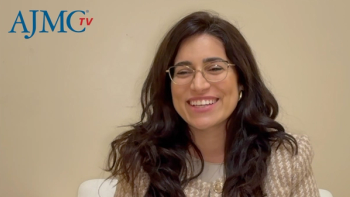
Sally Okun Outlines What Patients Define as Good Care
Sally Okun, RN, MMHS, vice president, Policy and Ethics, PatientsLikeMe, discusses findings from PatientsLikeMe's research on what patients define as good care.
This page contains sponsored advertising.
Sally Okun, RN, MMHS, vice president, Policy and Ethics, PatientsLikeMe, discusses findings from PatientsLikeMe's research on what patients define as good care.
Transcript
PatientsLikeMe recently performed some research on what patients define as “good care.” What were some of the key findings?
There’s 10 themes that we actually distilled down from 1200 different themes that were actually provided by a variety of people: patients as well as members of our PatientLikeMe site. Then, people actually from a clinic here in Baltimore participated in it, as well, because we really wanted to get a diverse understanding of how might a person define what good care looks like to them. I think the 3 key themes that stood out to me was first, “let me know how I can be an active participant in my care.” That, I think, is reflecting where we are today from where we were a generation ago, where most people just allow their clinicians or their doctors to tell them what they needed to do and then they moved ahead with their health. Today, consumers and patients, whether you consider yourself a consumer or patient, really are expecting more of a partner role, and I think that the healthcare system hasn’t quite caught up yet. They are sort of a little bit behind, so I think that was 1 of the very first things that stood out for me, and that highlighted an opportunity that we have; its beyond engagement, it’s a partnership, and we must really begin thinking about that.
The other key theme was to focus on outcomes. Patients really wanted to know, “What will happen as a result of the treatment that you’re thinking about giving me? What has happened with other people that you’ve given this treatment to in the past?” They want to see more information about if that actually translates into something that is more realistic for them. Statistical averages and things like that, for most patients, is hard to digest, so when I think they could put it in some perspective that’s more about them, they understand what their role is, and they have a better understanding of what they might measure in terms of seeing how well the outcome went. Then, it actually really starts to create this full range of spectrum of partnerships along the way.
Lastly, I’d say the piece around collaboration, understanding that, “I am more than just a disease, or I am more than just the condition that you’ve diagnosed me with, that I’m a whole person,” and so understanding how that comes together when you see me at the point of care in my doctor’s visit is really an important consideration for patients. We estimate that 99% of the time we are not with our doctors. So, for that amount of time, we need to be always making our own decisions and trying to figure out what our best path will be forward. When we have that 1% of our time with our clinicians, it’s probably going to be best used brining in that information that people have from their personal experiences living with health conditions over time, and we’ve not previously harnessed that information in an effective way, and I think now we’re seeing patients and consumers want us to do that.
Newsletter
Stay ahead of policy, cost, and value—subscribe to AJMC for expert insights at the intersection of clinical care and health economics.





























































